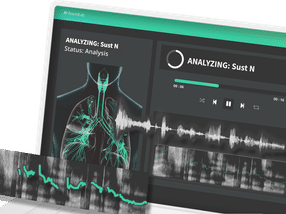Structure of Human Cytochrome P450 2D6 solved by GlaxoSmithKline with the use of Fludigm Technology
The TOPAZ® system for protein crystallization was instrumental in helping GlaxoSmithKline (GSK) solve the structure of cytochrome P450 2D6, an enzyme important in the metabolism of a wide variety of drugs. TOPAZ crystallization chips were used to identify positive conditions for crystallization and subsequently to grow P450 2D6 crystals sufficiently large and well ordered for structural analysis. The research was conducted by the GSK Discovery Research Group in Harlow, UK, and the findings are presented in the Journal of Biological chemistry.
For this protein target, conventional microplate crystallization trials failed to yield crystals suitable for an X-ray crystal structure determination, according to Paul Rowland, Investigator, Structural Sciences at GSK. Consequently, the team turned to TOPAZ preparative chips to further explore crystallisation conditions and to scale up those which appeared promising. In the paper Rowland et al. describe the procedure whereby crystals were grown and harvested from the TOPAZ chips and then used to solve the protein structure.
The P450 2D6 structure is a milestone in ongoing work to determine the structures of various bound substrates and inhibitors related to ligand recognition and specificity in human cytochrome systems. A relatively large number of genetic polymorphisms have been described for 2D6, some of which are markers for rapid, or conversely, very poor metabolism. A deeper understanding of these polymorphisms as facilitated by 3-dimensional structural considerations may lead to safer, more efficacious drugs. The publication of the P450 2D6 structure attests to the value of a long-standing collaboration between GSK and Fluidigm to integrate TOPAZ technology into the drug discovery process.
Most read news
Topics
Organizations
Other news from the department research and development

Get the analytics and lab tech industry in your inbox
By submitting this form you agree that LUMITOS AG will send you the newsletter(s) selected above by email. Your data will not be passed on to third parties. Your data will be stored and processed in accordance with our data protection regulations. LUMITOS may contact you by email for the purpose of advertising or market and opinion surveys. You can revoke your consent at any time without giving reasons to LUMITOS AG, Ernst-Augustin-Str. 2, 12489 Berlin, Germany or by e-mail at revoke@lumitos.com with effect for the future. In addition, each email contains a link to unsubscribe from the corresponding newsletter.






























































